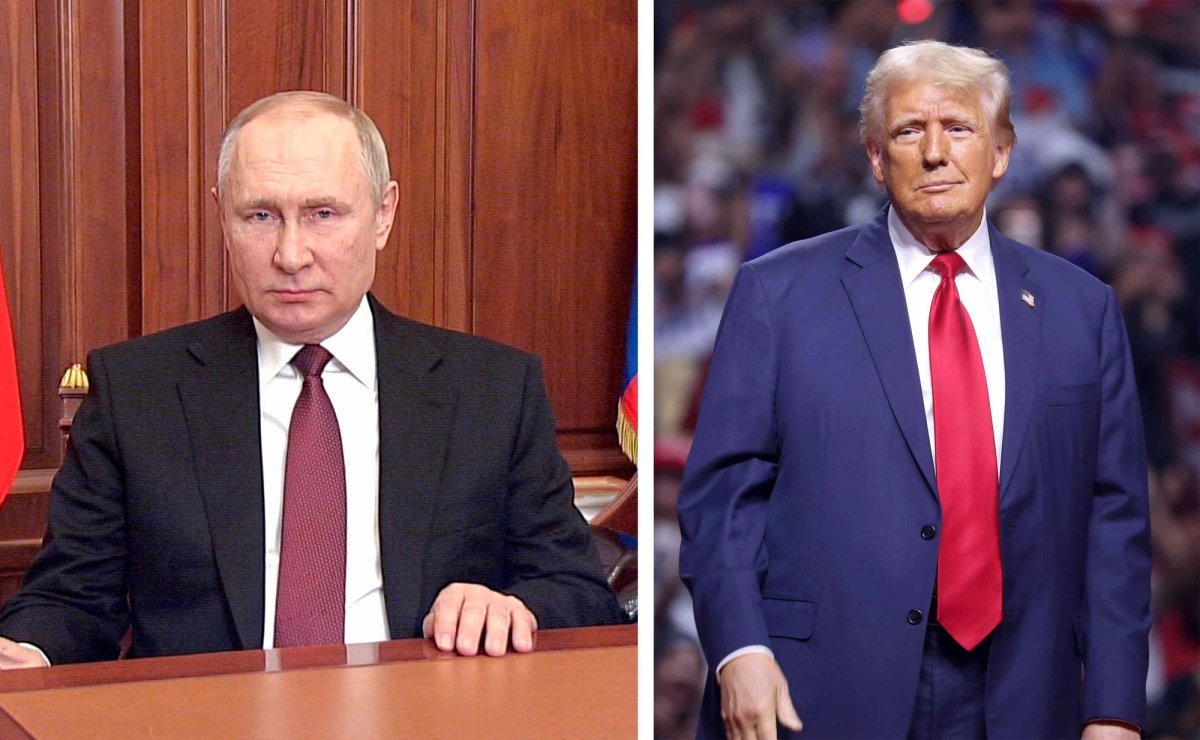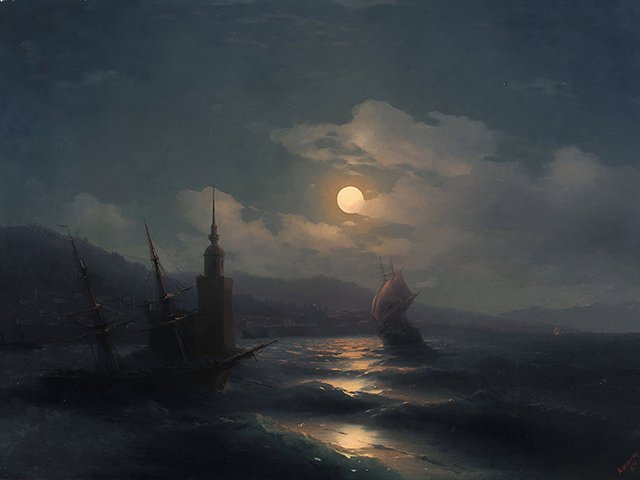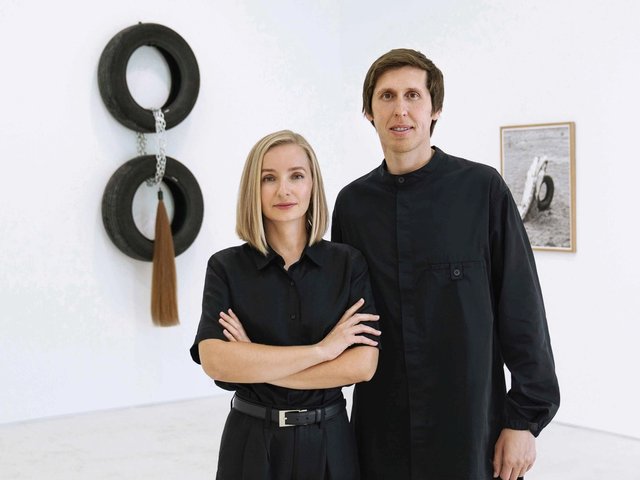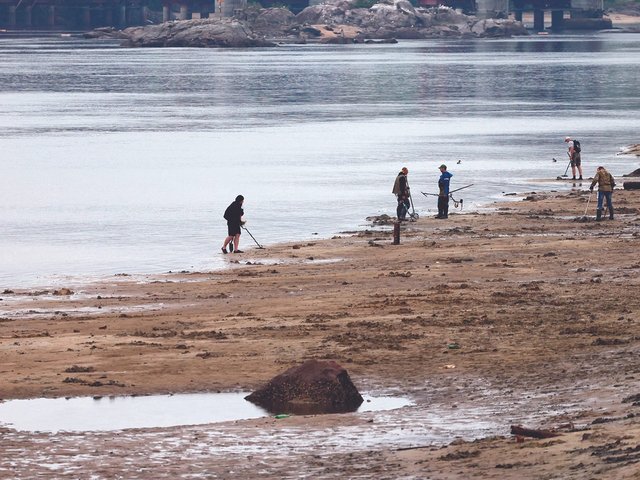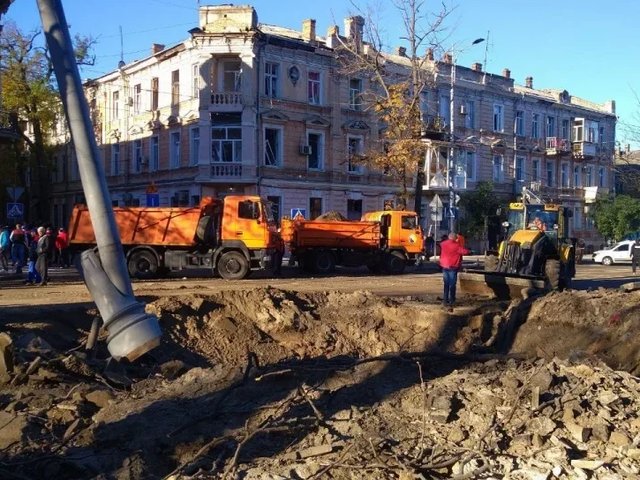The Trump administration’s foreign aid freeze has left Ukrainian and American organisations scrambling to secure funds to support Ukraine’s culture sphere which, like the country as a whole, has faced significant destruction following Russia’s invasion of Ukraine four years ago.
US President Donald Trump’s phone call with Russian President Vladimir Putin on Wednesday (12 February) and calls to end the war essentially on Russia’s terms has raised further fears about the fate of Ukraine and its cultural heritage.
Trump placed a 90-day pause on all federal grants as part of his barrage of Inauguration Day executive orders. It was followed by the dismantling of the US Agency for International Development (USAID), which has sent over $37.6bn to Ukraine since the start of the war, small amount of which was for culture.
Just four months earlier, during Ukrainian President Volodymyr Zelensky’s visit to New York for the UN General Assembly, the US State Department had announced additional cultural support funding for Ukraine.
Elon Musk, the world’s richest man, has, in his role as head of the newly-created Department of Government Efficiency (DOGE), and on his X social media platform, denounced USAID, making unsubstantiated claims that the organisation has been a vehicle for waste and corruption. On 3 February he posted about “feeding USAID into the wood chipper”.
Trump is also seeking to reshape American culture. He has seized control of the John F. Kennedy Center for the Performing Arts in Washington, DC, claiming falsely that it had targeted youth with drag shows, and promises a new “golden age” of arts and culture.
The website of the Conflict Observatory, an organisation that documents evidence of war crimes and the cultural, environmental and humanitarian impacts of the Russian invasion, and is funded primarily by the US State Department, no longer functions, and the organisation seemingly having halted new work.
Fiona Greenland is an associate professor of sociology at the University of Virginia, one of several prestigious US institutions that contribute to the Conflict Observatory, and the co-chair of the Cultural Resilience Informatics and Analysis (Curia) Lab, which released a report in January on the environmental impact of Russia’s destruction of the Oskil dam on the Sviati Hory National Park. She tells The Art Newspaper that the Conflict Observatory “has transitioned from active reporting to preserving the data collected over the two-year period of the programme” and “we are not able to initiate new open-source documentation pertaining to Ukraine”. Greenland travelled to Odesa in February as a UVA faculty member. “As investigators, our job is to document information systematically and thoroughly assess impacts,” she said by email. “We hope to get back to this work soon, before the information is lost.”
The slashing of American foreign aid coincided with a Russian missile attack on 31 January on the historic centre of Odesa, a strategic Black Sea port and Unesco World Heritage site. The 19th-century Bristol Hotel, and the Philharmonic Hall and Chabad Odesa Jewish University sustained significant damage.
Across Ukraine, cultural managers have been considering their options to make up for the loss in US funding.
Viktor Dvornikov, an architect in Kharkiv in eastern Ukraine, and his colleagues, salvage and restore architectural details from building rubble after Russian attacks. They receive approximate $70,000 in funding from USAID and the Washington, DC-based NGO Pact and “were planning a few more sites for this year” before the money was pulled, Dvornikov told The Art Newspaper in a WhatsApp message. He will be “going to European funders” to continue the project “because it’s very significant to save authentic parts of building to save the historical face of the city and region".
The Yermilov Centre, a contemporary art venue in Kharkiv, “receives funding from European partners, from the European Commission, and mainly from Germany, Poland, Denmark and the Netherlands” as well as from the Karazin University where it is based, and the Ukrainian Cultural Foundation, the director, Nataliia Ivanova, tells The Art Newspaper. “Our colleagues who received funding only from USAID have big problems today.”
Ukraine’s Coalition of Cultural Actors NGO conducted a survey of dozens of cultural institutions to assess the impact of the funding freeze, and to inform its appeal to the European Union to step in to fill the gap. Olha Sahaidak, the coalition’s head, told Ukrainian broadcaster Radio Kultura that, as a preliminary estimate, the culture sector now has a shortfall of up to $3m.
Cultural projects supported by USAID were part of broader “democracy development and civil society” programmes and “media as a part of culture was 90% supported by USAID”, Sahaidak tells The Art Newspaper. “It is this sector that has suffered the most—podcasts, radio, You Tube channels, investigative reporting, have all been cut. Razom for Ukraine, a New York-based charity which fundraises to support the country, and to promote Ukrainian culture, has also been hit by the USAID shutdown.
Sahaidak says that “since Ukrainian culture is an integral part of European culture”, Europe’s academic and artistic sectors, which had been “welcoming of Russian culture for years” now have “a certain responsibility” to Ukrainian culture.
The Unesco director-general Audrey Azoulay inaugurated the Lviv Culture Hub, which aims to “foster recovery through culture”, on 28 January in a $1.7m project, financed by Spain. Azoulay also announced a €2.2m EU-funded project to digitize and promote Ukraine’s Jewish documentary heritage and another to restore and promote over 300 works by about 50 Ukrainian women artists. Since the 2022 invasion, Unesco has mobilised nearly $74m from member countries to support Ukraine.
On 1 February Ukraine’s Ministry of Culture and Strategic Communications convened an international conference, Cooperation for Resilience, with Unesco’s support, and with participating 28 countries.
Mykola Tochytskyi, the minister of culture and strategic communications, told the gathering: “We want to send a clear message to the world: Ukrainian culture must be protected. Today, consolidating international support for Ukraine’s cultural heritage is more crucial than ever. We must also intensify our efforts to assess the damage and losses.”
The ministry reported that, as of late January, Russia has damaged or destroyed 1,333 cultural heritage sites and 2,185 cultural infrastructure facilities in Ukraine.
Sahaidak tells The Art Newspaper that “the most devastating” aspect of the withdrawal of US assistance “is the symbolic loss”, the betrayal and abandonment by the US.
She says: “Against the backdrop of fatigue, fear, and uncertainty, culture plays the role of a pacemaker. We are determined to survive and resist.”


